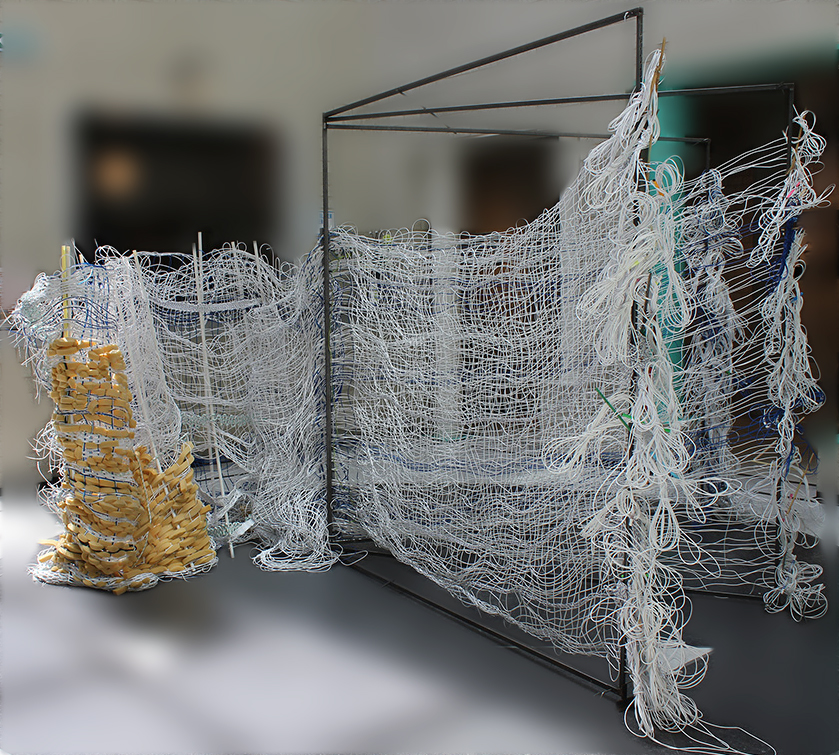Cathérine has a background as a designer and is always balancing between the applied
and the autonomous – this was already apparent during her final year at Maastricht’s Art
Academy. After graduating from the University of Applied Science Amsterdam with a
degree in Architecture and later from ArtEZ with a Master of Arts degree, she began to
pursue new avenues with textile, which resulted in two and three-dimensional work.
For Cathérine, textile has always been something three-dimensional, spatial. During her
Architecture study, she noticed that people considered textiles to be two-dimensional
whereas she saw the similarities between textile and architecture. This laid the
foundation for the creation of the concept “constructive textile” during her master study
at ArtEZ, followed by ongoing research, resulting in various pieces of art.
The watermark of Cathérine’s work is that the objects themselves but also the materials
used, tell stories that expose social constructs or environmental issues. These stories
are not to meant to judge on what’s right or wrong but are meant to make the audience
more conscious and to highlight diMerent perspectives. Her work is marked by
contradiction. This is expressed through colours and materials: complementary colours
juxtaposed, materials from a variety of sources – all in a single piece.
In this fabric, the infrastructure of Amsterdam plays an important role. The threads of
the chain form a complex network that is reminiscent of the metro lines, bus routes,
roads and footpaths in large cities such as Amsterdam. This infrastructure is the
meeting point for the diMerent residents of the city and the fabric symbolizes the way in
which people move through this tangle of connections.
The fabric is created in the diMerent frames, which work towards the standing part from
diMerent directions. Amsterdam, which has been inhabited for centuries by a great
diversity of residents; people who have lived here since birth, but also a great diversity of
people who are driven by the dynamics of the city, out of curiosity, for wealth, workrelated,
love for another or for the city, or a hope to be safe in Amsterdam.
Each thread in the fabric represents a route, a connection between diMerent points, just
as the infrastructure of a city connects the lives of its residents. The overlaps and
intersections in the fabric are the encounters and interactions between people who,
despite their diMerent backgrounds and purposes, jointly contribute to the dynamics of
the city.
The three-dimensional character of the final fabric is created by working with diMerent
lengths in the weaving phase. The resulting bulges create a stable and resilient object,
which reflects the resilience of urban societies. Despite the diversity and complex
structures, everything works together to form a harmonious, self-suMicient city.
In addition to being a work of art, the fabric is a powerful metaphor for the city as a living,
dynamic organism in which movement and human interaction are inextricably linked.



